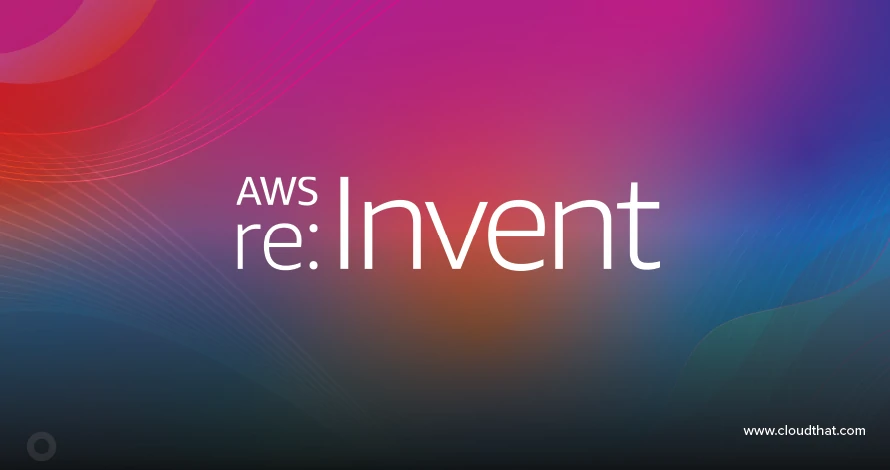|
Voiced by Amazon Polly |
Introduction
As more internet properties rise, user-text moderation is mission-critical. Social media comment on posts and e-commerce site product review comment post comments are just a couple of examples where content moderation is ensuring safety, compliance, and trustworthiness. Static keyword filters or pre-trained general AI models only scratch domain-specific nuance, industry speak, slang, or inadvertent offenses getting past keyword filters. Amazon Nova is a line of base models designed for text understanding and generation. Amazon Nova can be customized into a domain-specific moderation engine that is tailored to your rules and attuned to your community’s voice with customization. This is a step-by-step guide on how to customize Amazon Nova for content moderation, data preparation to training, testing, and deployment, with code snippets and battle-tested insight.
Pioneers in Cloud Consulting & Migration Services
- Reduced infrastructural costs
- Accelerated application deployment
Why Customize Nova for Content Moderation?
Generic moderation APIs employ generic buckets like “hate speech” or “explicit content.” Organizations tend to need a more particular taxonomy, i.e., “brand defamation,” “risk of self-harm,” or “medical misinformation.”
Amazon Nova Customisation provides the ability to:
- Imbed policy nuance: Adapt model behavior to your own community rules.
- Handle domain vocabulary: Support slang, acronyms, and mention of culture.
- Boost accuracy: Reduce false positives that frustrate users.
- Enhance recall: Restore dormant or weak transgressions that base models tend to overlook.
- Be nimble: Re-tune or retrain quickly as the language changes.
AWS-tuned Nova models saw up to 7.3% F1-scores gains on moderation data sets such as Aegis, WildGuardMix, and Jigsaw. That’s value measured made in less than an hour of fine-tuning.
Architecture and Workflow
This is the overall workflow to train your own moderation model with Nova:
1. Gather and tag data — A user text data set and violation tag data set.
- Emit Amazon Bedrock-formatted JSONL files — One per moderation dialogue.
- Make a training recipe (YAML) — Define model version, LoRA weights, and training hypers.
4. Begin an Amazon SageMaker AI training job — Utilize AWS SDK or console to optimize model.
5. Test on test data — Now calculate F1, precision, and recall. - Host on Amazon Bedrock — Host your model for real-time moderation inference yourself.
Step-by-Step Guide
Step 1:
Preparing data
Example:
|
1 2 3 4 5 6 7 8 9 10 11 12 13 14 15 16 17 18 19 20 21 22 |
{ "schemaVersion": "bedrock-conversation-2024", "messages": [ { "role": "user", "content": [ { "text": "You are a content moderation assistant. Given the policy below, evaluate the user message.\n<POLICY>Harassment and hate speech are not allowed.</POLICY>\n<TEXT>You’re such a loser!</TEXT>" } ] }, { "role": "assistant", "content": [ { "text": "<POLICY VIOLATION>Yes</POLICY VIOLATION>\n<CATEGORY LIST>Harassment</CATEGORY LIST>" } ] } ] } |
Step 2: Define Training Configuration
The recipe file specifies how the model should train.
For Example: text_cm.yaml
run:
|
1 2 3 4 5 6 7 8 9 10 11 12 13 14 15 16 |
name: nova-text-moderation model_type: amazon.nova-lite-v1:0:300k model_name_or_path: "nova-lite/prod" replicas: 4 data_s3_path: "s3://my-moderation-data/" output_s3_path: "s3://my-moderation-output/" training_config: max_length: 32768 global_batch_size: 32 trainer: max_epochs: 1 optim: lr: 1e-5 name: distributed_fused_adam peft: peft_scheme: "lora" |
Key elements:
- peft_scheme: “lora” enables efficient parameter-efficient fine-tuning (PEFT).
- max_epochs: 1 avoids overfitting.
- The model runs distributed across 4 replicas for faster training.
Step 3: Launch Training Job Using Amazon SageMaker
Below is a minimal Python script that kicks off the training process via the Amazon SageMaker PyTorch estimator:
|
1 2 3 4 5 6 7 8 9 10 11 12 13 14 15 16 |
import boto3 import sagemaker from sagemaker.pytorch import PyTorch from sagemaker.inputs import TrainingInput session = sagemaker.Session() role = "arn:aws:iam::123456789012:role/MySageMakerRole" estimator = PyTorch( entry_point="train.py", role=role, instance_count=4, instance_type="ml.p5.48xlarge", framework_version="2.1", py_version="py310", hyperparameters={"recipe": "text_cm.yaml"}, output_path="s3://my-moderation-output/" ) |
Tip: The job name must contain only letters and hyphens, avoid underscores.
Step 4: Assess and Implement
Create an evaluation recipe (such as eval.yaml) to compare your model to after training. For deterministic outcomes, set the temperature to 0:
assessment:
Metric: every inference
temperature: 0;
maximum number of new tokens: 12000
Use your test dataset to run an evaluation job in Amazon SageMaker.
Next, use its ARN in your application to deploy the model via Amazon Bedrock:
import boto3 bedrock = boto3.client(“bedrock-runtime”)
|
1 2 3 4 5 6 |
response = bedrock.invoke_model( modelId="arn:aws:bedrock:us-east- 1:123456789012:model/my-nova-moderation", body={ "inputText": "I hate all players from that region!", "parameters": {"maxTokens": 300} }) response["outputText"]) to print <POLICY VIOLATION> is the output. Yes</POLICY VIOLATION><CATEGORY LIST>HateSpeech |
Real-time moderation that is customized for your policy framework is now provided by your model.
estimator.fit({“train”:TrainingInput(“s3://my-moderation-data/train.jsonl”)})
Tip: The job name must contain only letters and hyphens, avoid underscores.
Best Practices
- Schema consistency – Training, validation, and inference data all have the same shape.
- Edge cases – Represent borderline material to train subtle distinctions.
- Drift monitoring – Regularly review misclassifications as and when language evolves.
- Slightly iterate – Overfitting usually occurs after one epoch or >10k examples.
- Threshold calibration – Tune sensitivity for “unsafe” vs “review” predictions. Amazon Nova Lite’s cost-to-performance ratio (≈ $0.06 for 1M input tokens, ≈ $0.24 for 1M output tokens) makes it feasible for large-scale moderation at low latency.
Conclusion
Customizing Amazon Nova transforms it from an LLM to an intent-aware moderation solution that is optimized to your environment.
Deploying via Amazon Bedrock brings enterprise-level reliability, security, and elasticity to production workloads. The result? Safer communities, fewer moderation errors, and happier users, all powered by a tailored foundation model.
Drop a query if you have any questions regarding Amazon Nova and we will get back to you quickly.
Making IT Networks Enterprise-ready – Cloud Management Services
- Accelerated cloud migration
- End-to-end view of the cloud environment
About CloudThat
CloudThat is an award-winning company and the first in India to offer cloud training and consulting services worldwide. As a Microsoft Solutions Partner, AWS Advanced Tier Training Partner, and Google Cloud Platform Partner, CloudThat has empowered over 850,000 professionals through 600+ cloud certifications winning global recognition for its training excellence including 20 MCT Trainers in Microsoft’s Global Top 100 and an impressive 12 awards in the last 8 years. CloudThat specializes in Cloud Migration, Data Platforms, DevOps, IoT, and cutting-edge technologies like Gen AI & AI/ML. It has delivered over 500 consulting projects for 250+ organizations in 30+ countries as it continues to empower professionals and enterprises to thrive in the digital-first world.
FAQs
1. What data do we require for customization?
ANS: – LoRA-based fine-tuning necessitates around 10,000 labeled samples for significant accuracy improvements without overfitting.
2. Can we define our own policy categories?
ANS: – Yes. The assistant output format (<CATEGORY LIST>.</CATEGORY LIST>) is flexible, add in any category-specific taxonomy for your site.
3. How do we enact responsible moderation?
ANS: – Combine machine Amazon Nova moderation with human review loops for gray-area situations and continuously retrain on new policy changes or flagged samples.

WRITTEN BY Daniya Muzammil
Daniya works as a Research Associate at CloudThat, specializing in backend development and cloud-native architectures. She designs scalable solutions leveraging AWS services with expertise in Amazon CloudWatch for monitoring and AWS CloudFormation for automation. Skilled in Python, React, HTML, and CSS, Daniya also experiments with IoT and Raspberry Pi projects, integrating edge devices with modern cloud systems.


 Login
Login


 October 22, 2025
October 22, 2025 PREV
PREV










Comments